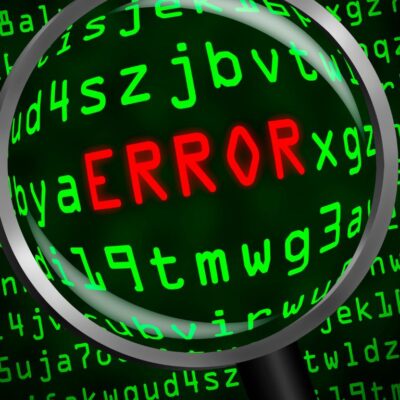The Kernel Data Inpage Error (stop code 0x0000007A) is a Blue Screen of Death that appears when Windows can’t read important data from the page file into memory. It often points to problems with your disk, RAM, cables, or drivers. The crash can also risk your files, so treat it as urgent.
What you’ll usually see
- “Your PC ran into a problem and needs to restart… KERNEL_DATA_INPAGE_ERROR”
- Repeating crashes, slow boot, or random freezes
- Clicking/strange noises from the drive (bad sign)
Common reasons (plain and simple)
- Loose or damaged cables between the drive and motherboard
- Hard drive/SSD issues (bad sectors, failing drive)
- Corrupted or missing system files
- RAM problems (bad stick, bad slot)
- Outdated/corrupt storage drivers or a faulty disk controller
- Power supply issues (unstable or underpowered PSU)
- Malware interfering with system files
- BIOS/firmware bugs or incompatibility
- Problematic software recently installed
Before you start: protect your data
- Back up anything important now if Windows still boots.
- If Windows won’t boot, skip down to “If Windows won’t start” for safe ways to copy files first.
Fixes (start at the top and go down)
1) Reseat and check cables (2 minutes)
- Shut down, unplug power, open the case.
- Reseat the SATA/NVMe and power cables to the drive and the motherboard.
- If you can, try a different SATA cable/port.
2) Check the drive for errors (CHKDSK)
Option A: From Windows
- Press Win + X → Terminal (Admin) or Command Prompt (Admin).
- Run:
chkdsk C: /f /r
Option B: From Recovery
- Force two or three failed boots to trigger Automatic Repair → Advanced options → Command Prompt.
- Run the same
chkdskcommand above.
If CHKDSK reports lots of bad sectors, back up immediately and plan for a drive replacement.
3) Scan for malware (quick rule-out)
- Settings → Update & Security → Windows Security → Virus & threat protection → Scan options → Full scan.
- Let it finish, then reboot.
4) Repair system files (SFC and DISM)
Open an elevated terminal and run:
sfc /scannow
If it finds issues or you still crash, run:
DISM /Online /Cleanup-Image /RestoreHealth
Reboot when done.
5) Test your memory (RAM)
Built-in test
- Press Win + R, type
mdsched.exe, press Enter. - Choose Restart now and check for problems.
Deeper test
- Use MemTest86 from a bootable USB for a thorough check (let it run multiple passes).
- If errors appear, test sticks one by one and swap slots to pinpoint the bad part.
6) Update or reinstall storage drivers
- Win + X → Device Manager → expand Disk drives and IDE/ATA/ATAPI controllers or Storage controllers.
- Update driver for the drive/controller.
- If issues persist, Uninstall device (Windows will reinstall on reboot).
7) Check Event Viewer clues
- Win + R → eventvwr.msc → Windows Logs → System.
- Look for errors around the crash time (disk, ntfs, storport, controller).
- The message often points to the failing part.
8) Boot in Safe Mode (to isolate drivers/apps)
- Settings → Update & Security → Recovery → Advanced startup → Restart now
- Troubleshoot → Advanced options → Startup Settings → Restart
- Press F4 (Safe Mode) or F5 (with networking). If stable in Safe Mode, a third-party driver or app is likely the cause.
9) Remove newly installed or suspicious software
- Settings → Apps → Installed apps → sort by Date → uninstall recent additions.
- Reboot and test.
10) Update BIOS/firmware (only if needed)
- Get the exact model from your PC/motherboard maker’s site.
- Read steps carefully and don’t interrupt the update.
- Skip this if you’re not seeing storage/compatibility notes in the release info.
11) Check power supply basics
- If you’ve added hardware recently, ensure your PSU wattage is sufficient.
- Unplug non-essential peripherals and test.
If Windows won’t start (but you need your files)
- Try Windows Recovery
- Interrupt boot 2–3 times → Automatic Repair → Advanced options → Command Prompt.
- Use
notepad→ File → Open to browse and copy files to an external drive (handy trick).
- Use a bootable USB
- Create a Windows or Linux live USB on another PC.
- Boot from it and copy your important files to an external drive.
Once your files are safe, continue with CHKDSK, SFC/DISM, and hardware tests.
When to replace hardware
- Drive: Frequent CHKDSK repairs, SMART warnings, or clicking/whirring noises → replace the drive.
- RAM: Any MemTest errors → replace the faulty stick/slot.
- Cables/ports: Intermittent detection or errors that move with the cable/port → replace cable or use a different port.
- PSU: Random power loss or instability under load → test with a known-good PSU.
Quick FAQ
Will I lose data?
You might, especially if the drive is failing. Back up first.
Is this always a hard drive problem?
No. RAM, drivers, power, malware, and even BIOS bugs can trigger it.
Can I keep using the PC after one crash?
Back up and run checks immediately. Repeated crashes mean something’s deteriorating.
Short action plan
- Back up now.
- Reseat cables → CHKDSK → Full virus scan.
- SFC/DISM repairs.
- RAM tests (replace if errors).
- Update/reinstall storage drivers; check Event Viewer.
- Safe Mode → remove recent apps/drivers.
- Consider BIOS/firmware update.
- Replace failing hardware (drive/RAM/PSU/cables) if tests point that way.
Follow these steps, and in most cases you’ll either fix the crashes or clearly identify the part that needs replacing—without losing your files.





